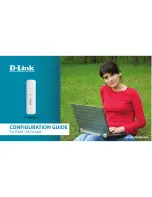
14
3.
Decouple power from ground with decoupling capacitors as close to the SocketModem module power pins as
possible.
4.
Eliminate ground loops, which are unexpected current return paths to the power source and ground.
5.
Decouple the telephone line cables at the telephone line jacks. Typically, use a combination of series inductors,
common mode chokes, and shunt capacitors. Methods to decouple telephone lines are similar to decoupling
power lines; however, telephone line decoupling may be more difficult and deserves additional attention. A
commonly used design aid is to place footprints for these components and populate as necessary during
performance/EMI testing and certification.
6.
Decouple the power cord at the power cord interface with decoupling capacitors. Methods to decouple power
lines are similar to decoupling telephone lines.
7.
Locate high frequency circuits in a separate area to minimize capacitive coupling to other circuits.
8.
Locate cables and connectors so as to avoid coupling from high frequency circuits.
9.
Lay out the highest frequency signal traces next to the ground grid.
10.
If a multilayer board design is used, make no cuts in the ground or power planes and be sure the ground
plane covers all traces.
11.
Minimize the number of through-hole connections on traces carrying high frequency signals.
12.
Avoid right angle turns on high frequency traces. Forty-five degree corners are good; however, radius turns
are better.
13.
On 2-layer boards with no ground grid, provide a shadow ground trace on the opposite side of the board to
traces carrying high frequency signals. This will be effective as a high frequency ground return if it is three times
the width of the signal traces.
14.
Distribute high frequency signals continuously on a single trace rather than several traces radiating from one
point.
Electrostatic Discharge Control
All electronic devices should be handled with certain precautions to avoid damage due to the accumulation of
static charge.
See the ANSI/ESD Association Standard (ANSI/ESD S20.20-1999) – a document “for the Development of an
Electrostatic Discharge Control for Protection of Electrical and Electronic Parts, Assemblies and Equipment.” This
document covers ESD Control Program Administrative Requirements, ESD Training, ESD Control Program Plan
Technical Requirements (grounding/bonding systems, personnel grooming, protected areas, packaging, marking,
equipment, and handling), and Sensitivity Testing.
Multi-Tech Systems, Inc. strives to follow all of these recommendations. Input protection circuitry has been
incorporated into the Multi-Tech devices to minimize the effect of this static buildup, proper precautions should be
taken to avoid exposure to electrostatic discharge during handling.
Multi-Tech uses and recommends that others use anti-static boxes that create a faraday cage (packaging
designed to exclude electromagnetic fields). Multi-Tech recommends that you use our packaging when returning
a product and when you ship your products to your customers.
Содержание MTSMC-G2
Страница 1: ...SocketModem GSM MTSME G2 Hardware Guide for Developers...
Страница 7: ...Mechanical Drawings Basic Build 7...
Страница 8: ...Mechanical Drawings Voice Build 8...
Страница 9: ...Mechanical Drawings IP Build 9...
Страница 28: ...28 SocketModem Developer Board Block Diagram Comment DAR8 Block Diagram 2008 png...















































